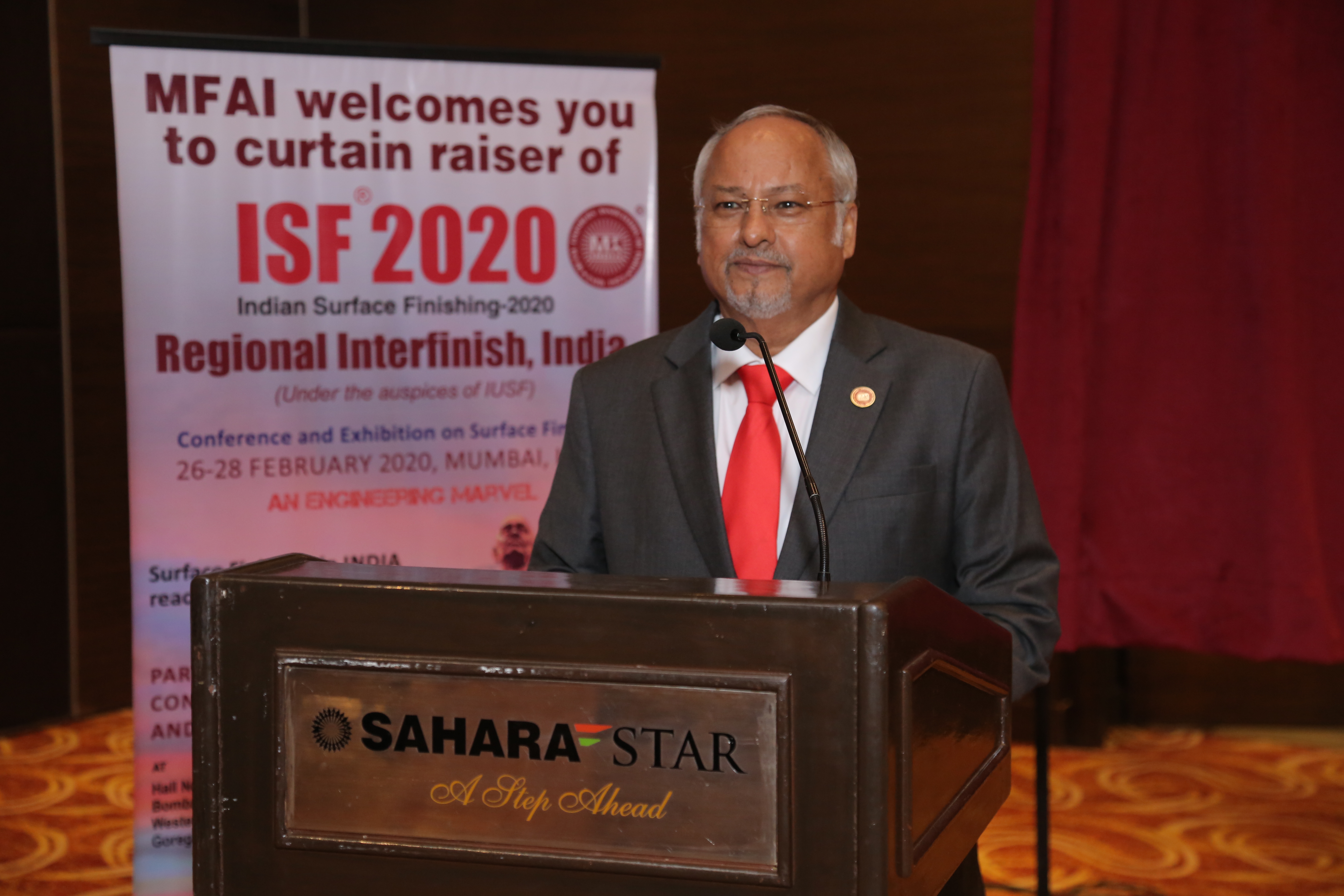Factory 4.0 digitalization in the plating industry
Plating, Surfacing, and Finishing – Demystified
September 24, 2019
“Our spends on social media, mobile, and the internet will definitely be on the increase during ISF-2020”
October 8, 2019Factory 4.0 digitalization in the plating industry

From the 1800’s when gold was used to plate lesser metals and beautify them, the surface finishing and electroplating industry has evolved to embrace newer and better technologies. It has however evolved gradually. In the 21st century when a new industrial revolution – industry 4.0 – looms large, platers and finishers are concerned about the ability to adapt.
Metal Finishers’ Association of India ( MFAI ) takes a look at what has changed and how it will affect metal finishing in general and plating in particular
What is Industry 4.0?
A common, widely-accepted definition of Industry 4.0 is “the subset of the fourth industrial revolution that concerns industry.”
Market consultancy, Deloitte quotes Germany Trade and Invest in stating, “INDUSTRY 4.0 connects embedded system production technologies and smart production processes to pave the way to a new technological age which will radically transform industry and production value chains and business models.”
Given these two definitions, we can conclude that Industry 4.0 is a set of principles, practices, and technologies that will take manufacturing to an altogether new level – touching every aspect including supply chain, accounting, marketing, and production.
The core concepts of Industry 4.0 include –
- Smart manufacturing using new and advanced technologies, such as Robotics Process Automation (RPA) and Artificial Intelligence (AI)
- Smart factories that function with near zero human intervention
- Dark factories – factories that can handle production without lights
- IoT manufacturing – manufacturing with the use of intelligent devices
- An integration of any or all of these technologies.
Change in manufacturing
Industry 4.0 is predicted to impact every area of life from manufacturing to consumer shopping to healthcare and manufacturing. Since the surface finishing and plating industry services manufacturing and production of metal parts and goods, it will naturally be impacted – but first let us take a look at how manufacturing is likely to be affected.
According to NewsRoomPosco , “the advancements in factories and production lines are likely to have the greatest economic impact on our lives.” The new era manufacturing heralds a convergence of computers and machines in a way that more and more processes can be automated with reducing human intervention. Large conglomerates, such as POSCO, Siemens, and BASF are designing smart factories using #IoT technologies, #AI, #Robotics, and #Machine Learning (ML) to produce high quality products with minimum waste.
The question then is — will surface finishing also form a part of this integration? If so what will be the future of those in the industry?
As part of Factory 4.0 revolution, robotics will be leveraged for Just in Time (JIT) and lean production by integrating the manufacturers’ ERPs with that of the platers and finishers – thus ensuring timely intimation of requirements and consequently timely delivery of service.
Industry 4.0 in Plating
Matthew Kirchner of PFOnline says an unequivocal no! Instead, robotics will be leveraged for Just in Time (JIT) and lean production by integrating the manufacturers’ ERPs with that of the platers and finishers – thus ensuring timely intimation of requirements and consequently timely delivery of service.
Some of the changes – particularly for platers and finishers – that Kirchner predicts are –
- Inter connectivity of almost every equipment along the supply and value chain
- Interconnected #ERP systems that “talk” to one another
- Algorithms to trigger processes
- Automated adjustment of lead times
- Automated adjustments of temperatures, chemical concentration, voltage, feed rate and other parameters.
- Plating with zero or very low warehouse time for metal parts
- Automated inventory
How would this impact plating and finishing?
Automation of the plating process is imminent – it has already been implemented overseas. Automating electroplating involves using sensors and #PLCs (Program Logic Controllers) to monitor temperature and other parameters within the electrolyte solution and convey the results to a supervisor terminal. The supervisor can then make modifications remotely by triggering robotic devices to carry out physical action.
Automating electroplating involves using sensors and PLCs (Program Logic Controllers) to monitor temperature and other parameters within the electrolyte solution and convey the results to a supervisor terminal.
Automation offers several advantages in electroplating –
- Automation enables handling of large production volumes
- Polishing and plating different types of metal becomes easier
- Decreases manual labor – saving time and money
- Texture can be applied through blasting and grinding by robots – making it safer for humans.
- Robots can work longer hours – which means higher output.
- Robots work faster than humans, which mean faster turnaround.
- With Industry 4.0, lead time is greatly reduced because of integration of customer and supplier systems.
- This also means lesser warehouse requirements.
- Where metal parts or machines are stored, they can be moved around remotely without human intervention.
- Industry 4.0 predicts an all round safer environment for an electroplater.
While the technology exists, it is as yet unaffordable for Indian electroplaters. Indeed, many Indian electroplaters still lack the knowledge and skill required for setting-up and operating the mechanism, although this last is easily resolved by commercial purchase of technology and training of the plater, which is one of our major endeavors at MFAI.

